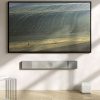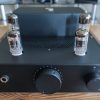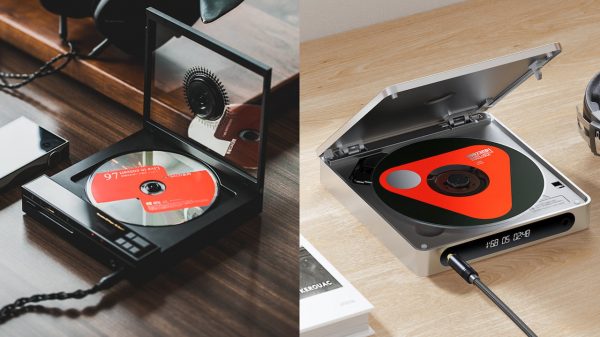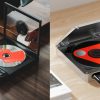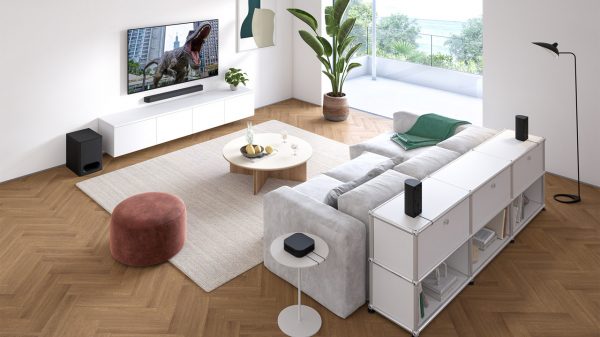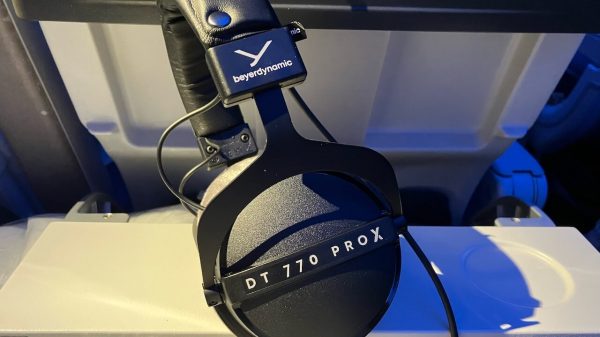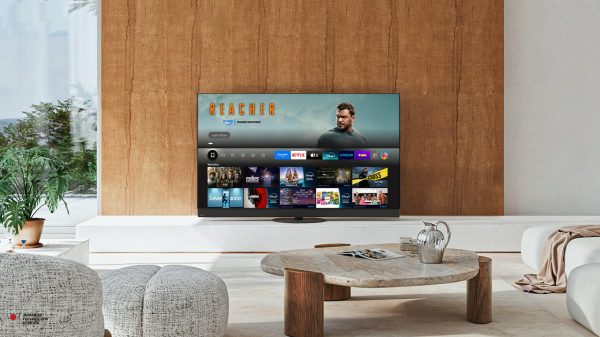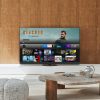Having established itself as one of the leading brands in the Dongle DAC, DAP, IEM, and headphone amplifier categories — FiiO really only had one more mountain to conquer. The brand has been a rather reliable manufacturer of affordable and high quality IEMs since 2016, but the over-ear and Bluetooth noise cancelling segments really only began to take shape with the EH3 in 2019, and the FT3 and FT5 wired full-sized headphones in 2022.
The FT3 is the budget offering using a dynamic driver and priced at $299 whilst the more recently released FT5 is a full-sized planar magnetic headphone which competes in the mid-market price range at $500 USD retail.
FiiO has proven it can compete effectively in the audiophile in-ear monitor market, but the over-ear market is a very crowded market space. With competitors like the HiFiMAN Ananda Nano and Audeze MM-100 lurking in the planar market and old favorites like the Sennheiser HD660s, Shure 1840, and Beyerdynamic DT1990 all hovering at roughly the same price, FiiO faces a rather significant challenge carving out a spot for the FT5.

Unboxing
The FT5 arrived packed in a form-fitting brown leather hardcase with the headphones, cable, and 3 modular plugs for the cable (3.5, 4.4, and 6.35mm) along with an XLR adapter and two sets of pads (one protein leather and the other suede).
The cable is a 6-foot 392 strand silver-plated OFC cable using modular plugs at the source end and 3.5mm mono jacks at the earcups. The cable is both more pliable and shorter than the cable that ships with the FT3 which seems a bit odd, but it is an improvement over the FT3 cable in our opinion when it comes to durability and sound quality.

The case is well designed with a set of elastic loops to keep the adapters from getting lost or scratching the headphones which is a nice touch. With the matte black design of all the other elements though, the brown case seems a touch out of place and we were surprised that FiiO didn’t go with a black dyed leather with a silver zipper to match the aesthetic.

Design
FiiO’s recent design language comprises simple industrial designs made of quality materials. The FT5 follows that trend with aluminum/magnesium cups with an angled spoke pattern around a central cap with the FiiO logo in gold.
The headband is spring steel and leather, whilst the gimbals and hinges are made from the same alloy as the cups. The cups hold a 90mm planar magnetic driver, which is on the large side. Lightweight alloy used throughout keeps weight down to just under 490 grams (1 lb., 1 oz.) with cable attached, which makes them slightly heavier than many of the aforementioned competitors.
Adjustments to the suspension can be made, while the headband and cups remain fixed. This is a common arrangement, but was less comfortable for me than some other designs. Those with larger heads may find the range of adjustment somewhat limited. The FT5 will cause some physical fatigue due to the weight during long listening sessions, but this is quite common for large planar headphones and rather common with most of the models that we have reviewed.

The FT5 utilise an in-house designed 90mm planar magnetic driver using a 6um diaphragm, 20 Neodymium magnets per driver, and a micron plated aluminum-silver alloy coil.
The magnets are arranged with 11 to the inside and 9 on the reverse. This alignment creates a more even magnetic field for a more linear movement of the diaphragm. The result is a driver with 96dB/mW sensitivity, a frequency response from 7Hz-40kHz, power handling of up to 2 watts, and a nominal impedance of 36 ohms. The upside is a large, planar magnetic pair of headphones that are easier to drive with portable source devices.

Listening Notes
I auditioned the FT5 using FiiO’s R7 desktop DAP as well as an Astell&Kern KANN Max, RME ADI-2 FS R BE desktop unit, and even a Questyle M15 dongle. Dongles generally struggle with big planars due to the power requirements, but with the low impedance and high sensitivity of the FT5, it made sense to see how it would perform.
Sub-bass is better than anticipated as the big planars sometimes struggle in this regard. It may seem odd that a driver this large would struggle to produce bass, but with bass being produced both by the surface area and excursion, planars often suffer performance wise in that regard.
Their drivers move only fractions of a mm during most music playback and have a total range of motion that often is only 2mm or so. In this respect, FiiO has done well as the sub-bass is both impactful and moderately detailed.
For those looking for the best bass performance, the leather pads bring more sub-bass to bear while the suede pads deliver more mid bass clarity and detail, while missing out on some of the lowest tones. The bass seems a bit faster with the leather pads installed. There is some lingering warmth that thickens the mid bass with the suede ear pads, while it seems a bit faster and leaner with the leather.
Regardless of earpads, the mid bass has good but not class leading clarity and detail. Overall, the bass sort of splits the difference between the speed planars are known for, and the impact delivered by dynamic drivers. Unfortunately, it also seems to inherit some of the weaknesses of both as well.
The lower midrange’s performance is also somewhat pad dependent as the suede pads accentuate the mid bass at the expense of the lower midrange at times. The result is a warmer, more fluid tone than the leather pads present but with a touch less clarity.
With the leather pads, timbre is a bit cooler but detail is improved and the midrange comes across as being more balanced sounding. Guitar has good growl with a crisp rasp with the leather pads making them a better option for rock tracks, while the suede pads give duets and vocal pieces a greater sense of fluidity and warmth.

Moving up into the treble, the same pattern again emerges. The leather pads contributed to a leaner and more neutral sounding presentation, whilst the suede earpads certainly smooth out the top end of the range.
Resolution is good with a bit more detail with the leather pads. Percussion snap is well defined but cymbals lack a touch of energy needed to be realistic sounding. Extension is good with either set of pads. So it will really come down to user preference as cymbals are a bit more lifelike with the leather pads, but the suede are a bit more forgiving of songs with a thinner or brighter sounding treble range.
In terms of imaging, the soundstage is adequate with roughly proportional depth and width and some height, but it seems a bit tight compared to models like the more expensive Audeze LCD-2 ($799 at Amazon). I’d liken the soundstage on the FT5 to that of a high school auditorium stage while the LCD-2 delivers something a bit more like Lincoln Center.
Seating the orchestra is straight forward with no big gaps but the mid bass bump does seem to push male voices closer together. Instrument separation is good enough to keep things from feeling too compressed.
The one issue I kept coming back to was dynamics; the FT5 do not have the range of the big planar headphones that I normally listen to. If listening to the FT5 without having first listened to something like the Arya Stealth or LCD-4, it isn’t as noticeable, but when compared directly to those (which is admittedly unfair considering the price discrepancy) models, one cannot help but notice a decrease in dynamic range on the FT5.
Comparisons
Having mentioned several competitors throughout this review, I decided to A/B test three of those that I had on hand, namely the Audeze MM-100, Sennheiser HD660s, and Beyerdyamic DT1990. If the FT5 is going to make a name for itself in the over-ear headphone market, these are among its biggest challengers and are well respected.

The Audeze MM-100 ($399 at Amazon) is a recent release and the second in the Manny Maroquin Signature Series from Audeze; and primarily aimed at audio professionals who use their headphones daily in studio environments. Physically, the two are similar and weigh within a few grams of one other but somehow the MM-100 is the more comfortable of the two. The cups are slightly larger on the FT5, but again we are talking about very small differences as both house 90mm drivers.
The sonic performance does a lot more to differentiate the two models; the FT5 will deliver deeper low end extension, but with less definition and overall speed.
The Audeze sounds cleaner and more detailed throughout the bass range.
The MM-100 is also near neutral whilst the FT5 has a bit of a shallow ‘V’ signature overall. So, for those looking for a lively performer with popular music, the FT5 are more engaging.
However, those looking for a more reference signature will likely prefer the MM-100. Moving up, both have good midrange performance with solid clarity but with slightly different voicing, so personal preference will likely be in play. At the top end, both have good treble extension and texture with the FT5 being a little more forgiving than the MM-100.

Next up was the HD660s from Sennheiser ($449 at Amazon). This is a bit more of an “apples and oranges” comparison as the 660 uses Sennheiser’s most recent iteration of their duly famous dynamic driver, while the FiiO uses a planar transducer design. The physical differences are quite stark with the HD660s coming in at just over fifty percent of the weight of the FT5 and are a lot more comfortable, particularly for extended listening sessions.
Build on the 660s is mostly polymer so the FT5 may stand up to harsher treatment.
The two models differ quite dramatically in regard to driver technology and what a listener requires to drive them properly. The HD660s uses a 300 ohms driver that is happiest with large voltage swings while not requiring much drive current.
The FT5 on the other hand is a low impedance/high current planar design so users interested in both will have to use the appropriate amplification to get the most out of them.
The HD660s come across as somewhat “bass shy” in comparison to the FT5 and that might matter to anyone looking for a pair of headphones that can deliver the bass extension and impact that rock, heavy metal, orchestral music, and electronic music requires.
The HD660s rolls off gracefully below 180Hz which has been one of the biggest complaints among listeners.
Midrange performance is solid with both, but with the HD660s having a bit warmer tone compared to the FT5 and a bit more note weight as well. The FT5 delivers a leaner sound while delivering similar or maybe slightly more texture compared to the HD660s. At the top end, the FT5 is both more linear and better extended, but again sounds a bit leaner and even a touch harsh at times compared to the more forgiving tone of the HD660s.

Lastly, we compare the FiiO FT5 to the Beyerdynamic DT1990 Pro ($529 at Amazon), which are Beyerdynamic’s mixing and mastering headphone. The DT1990 utilizes the company’s Tesla technology dynamic drivers originally introduced in the flagship T1 in a shell designed to withstand the rigors of daily studio use.
The DT1990 weighs 100 grams less than the FT5 partially due to the 45mm dynamic drivers vs the 90mm planar of the FT5. This makes the DT1990, the more comfortable option. Beyerdynamic provide two sets of pads, one for more balance and the other for a more analytical sound (their words). The DT1990’s “B” pad set boosts bass slightly and gives it a sonic signature that is more similar to the FT5 than the “A” pads, so I used those to compare.
The FT5 has a little more bass volume but similar bass depth and texture compared to the DT1990. The DT1990 is again slightly warmer and a bit thicker in comparison.
The midrange performance has the FT5 as being slightly more clinical sounding, whilst the DT1990 sounds a bit more organic and fluid.
Highs are similar in that both can sound a touch hot if tracks lean in that direction. Between these two, it will come down to preference. Each are further apart than either of my descriptions or the frequency response graphs will show.

Conclusions
So where exactly does this headphone fit within the broader market?
Sonically, the FT5 offers a good balance with a few deviations from neutral including a mid bass bump. That can either add a bit of life and musicality or be a bit too much and become a distraction that can cloud the bass to midrange transition at times.
The upper midrange is well rendered and those who find that headphones like the HD660s and DT1990 have a bit too much warmth in this critical region, will find the FT5 rather appealing. The FT5 is a bit leaner while retaining similar or slightly better detail retrieval.
The treble is well extended with good texture and those who like a slightly sharp treble to accentuate those details will find the FT5 to their liking.
The weight is manageable and whilst the FT5 is not the most comfortable headphone I’ve worn, it is far from the worst. It is noticeably lighter than the Audeze LCD-3 and almost exactly the same weight as the HiFiMAN Susvara; which makes it comparable to some other popular models in the planar category.
For its first planar magnetic headphone, the FT5 shows a lot of maturity and also highlights a few places where FiiO can learn from this model and bring even more to the next generation product.
FiiO has shown more than once that they do listen and learn from each product and that excites me to see where the FT line of headphones goes next. The FT7 or 9 may just be a monster value as the FT5 is well on its way.
Where to buy: $449 at Amazon






